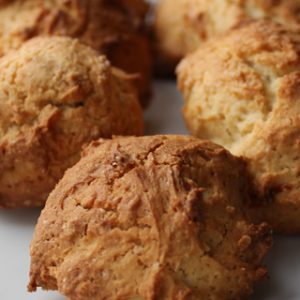In Lecce cartapesta is more than a souvenir
One of the most original souvenirs from Italy is Cartapesta made in workshops on Salento and especially around Lecce.
Some of us have made piggy banks and clumsy Christmas gifts for grateful grand parents from paper pulp – also known as papier mache or in Italy cartapesta – and I for one still recall the wonderful sticky feeling of squeezing glue from an old newspaper. Therefore I’m kind of puzzled every time I pass a south Italian cartapesta shop, and see how grown-up men are seriously engaged in this kind of work, both as an art form and as a craft. The paper pulp figurines are used for all kinds of decorative purposes. Especially in relation to religious festivals like Christmas and carnivals.

There are still many cartapesta shops in central Lecce
A Cheap Alternative to Plaster
The technique for making cartapesta has been known in ancient Egypt, Persia and China, where it was used to produce death masks and lacquered boxes. In the 15th century Italians discovered the potential of cartapesta as a cheap alternative to plaster, ceramics and carved wood. It was used to manufacture religious statues and church decorations –especially around Lecce – and later it was more widely used to make doll heads and ornamentation on chair backs and door panels until plastic took over. Before that the best cartapesta masters signed their work and were respected artists, and unlike other labour intensive crafts based on low cost materials, the art has survived.

The main cartapesta customers are not tourists but churches.
Modern cartapesta masters make huge carnival floats for the processions in Putignano (BA) and Massafra (TA) or tiny puppets, which are sold as tourist souvenirs. And some of them are still specialized in restoring and manufacturing religious statues, and making figurines used for the annual ‘presepes’ or nativity scenes.
This post was last updated in December 2017
Leave a Reply
Want to join the discussion?Feel free to contribute!
Leave a Reply Cancel reply
This site uses Akismet to reduce spam. Learn how your comment data is processed.




Papier mache was such fun to play with, wasn’t it?
Nice to learn some history about cartapesta. It’s pretty amazing what lovely detailed work can be created with this technique.
I love reading about ancient arts that are still being practiced. Love that they’re keeping it alive!
I’ve never thought about the origins of paper mache until reading this and I had no idea it was used to make death masks – how grizzly!
I remember, too, that lovely stickiness as a child. We used to make papier mache heads around balloons and then pop the balloons. Great fun. Didn’t realise it was such an art form in Italy.
Julia
Hi Mette, I had no idea of the tradition of cartapesta. It’s a pleasure to learn about it. I sure loved working with papier mache when I was little. We’d make such a delightful mess!
I remember that too. It never occurred to me that someone could make a living out of it.